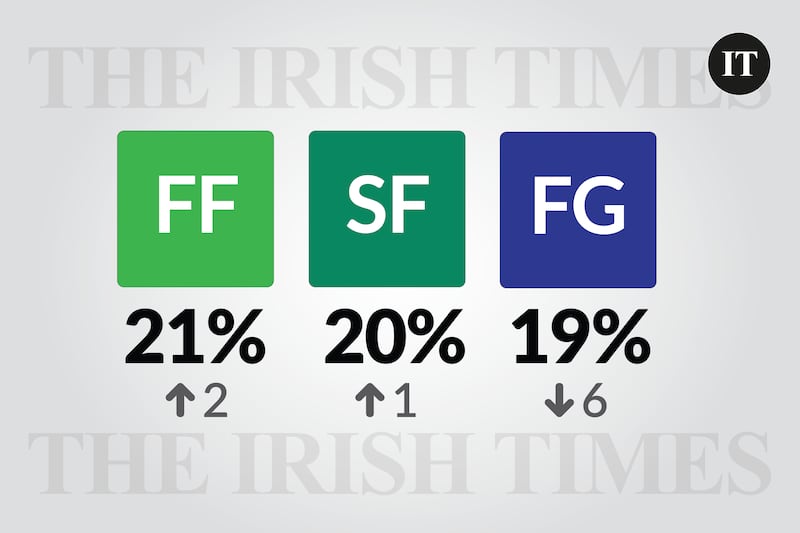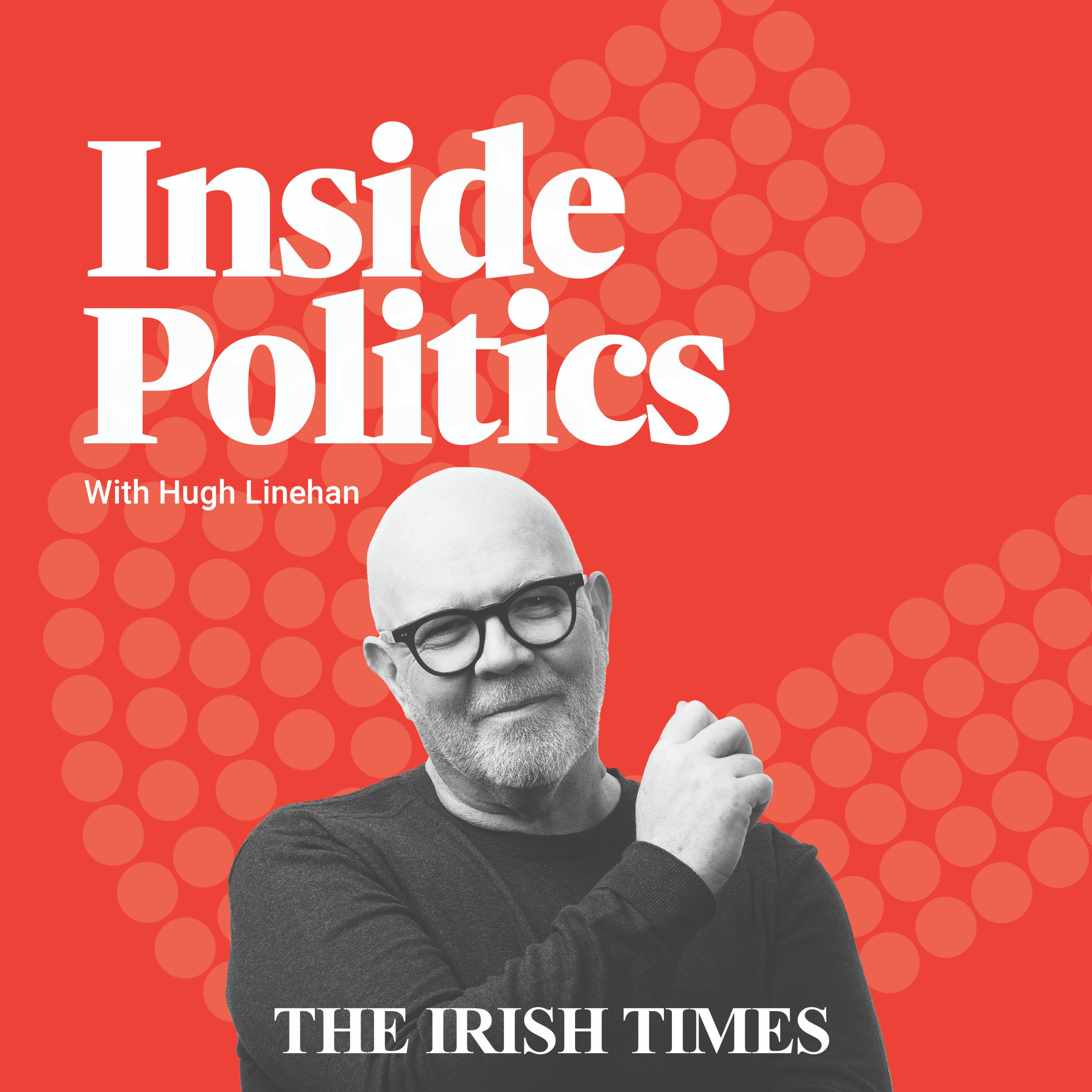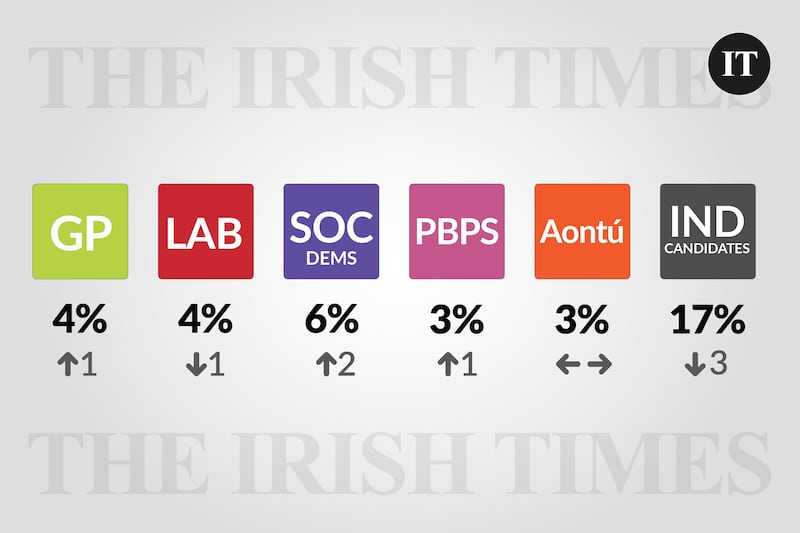As we head into the final week of campaigning, only a hair’s breadth separates Fianna Fáil, Sinn Féin and Fine Gael, according to the latest Irish Times/Ipsos B&A poll.
Conducted on Wednesday, Thursday and Friday of last week among a national sample of 1,200 eligible voters, the poll gives Fianna Fáil (on 21 per cent, up two) the slimmest of leads over Sinn Féin (on 20 per cent, up one) and Fine Gael (on 19 per cent, down six).

Based on these numbers, a two-party coalition is not mathematically possible. Someone else will have to be invited to the party.
Auditioning over the past two weeks for an invitation have been the smaller parties. This time around it is not just the Green Party (up one to 4 per cent) and Labour (down one point to 4 per cent) on the list. The Social Democrats (up two to 6 per cent) are also making their presence felt.
READ MORE

Harris hop becomes the Simon slump as poll shows Fine Gael behind Sinn Féin
Aontú are on 3 per cent (no change), as too are PBP (up one).
A collection of Independent candidates may also feature in the new government, with plenty to choose from. Support for Independents is on 17 per cent, down three points as some of their vote has likely moved into the smaller parties.
[ The Irish Times/Ipsos B&A poll: the full results in charts ]

Not so long ago, a two-party government was a real possibility, with Fine Gael surging in the polls. Since then, the party has dropped from 27 per cent to 19 per cent.
Satisfaction with Simon Harris has also softened, from a high of 55 per cent down to 46 per cent – a solid rating minus the elevation bonus.
Support for Fianna Fáil is up two points to 21 per cent, just when it matters. However, together Fine Gael and Fianna Fáil are now on 40 per cent, less than they achieved in the 2020 election. There will be a significant seat gap to be filled if they again attempt to form a government.
Government satisfaction has fallen in tandem with combined support for the Government parties, down four points to 35 per cent. Burgeoning coffers and a generous budget have not had the desired effect.
The last Irish Times/Ipsos B&A poll hypothesised that the Sinn Féin decline had run its course. This poll backs up that prediction: a corner turned with a one-point increase to 20 per cent.
As usual, Dublin is a happy hunting ground for some of the smaller parties. Voters are more experimental in the capital and this has helped the Social Democrats grab 12 per cent of the Dublin vote. Also punching above their weight in Dublin, and all on 7 per cent, are the Greens, Labour and People Before Profit.
Outside Dublin, Fianna Fáil averages 23 per cent and is the most popular party.
Regionally, Fine Gael is something of a contradiction, underperforming in country towns and villages but holding strong with rural voters (on 21 per cent) and especially with the farming community (on 32 per cent).
Geography is not the only dimension that clearly discriminates party support. Age is also a key variable. Sinn Féin takes a sizeable chunk of the youth vote (33 per cent of under 25s), while 65+ year-olds favour Fianna Fáil (34 per cent) and Fine Gael (22 per cent). New entrants find it easier to gain a foothold among young voters, with the Social Democrats a case in point, on 10 per cent among the under 25s.
With one week to go, the message from this final Irish Times/Ipsos B&A poll is one of consolidation. Leaving aside that Fine Gael has fallen back to earth somewhat, all other moves in party support are within the margin of error. Furthermore, satisfaction ratings for Micheál Martin, Mary Lou McDonald and Roderic O’Gorman are more or less unchanged.
Voting preferences are taking shape, which is more than can be said for the composition of the next government. Interesting times ahead.
- Listen to our Inside Politics Podcast for the latest analysis and chat
- Sign up for push alerts and have the best news, analysis and comment delivered directly to your phone
- Find The Irish Times on WhatsApp and stay up to date











